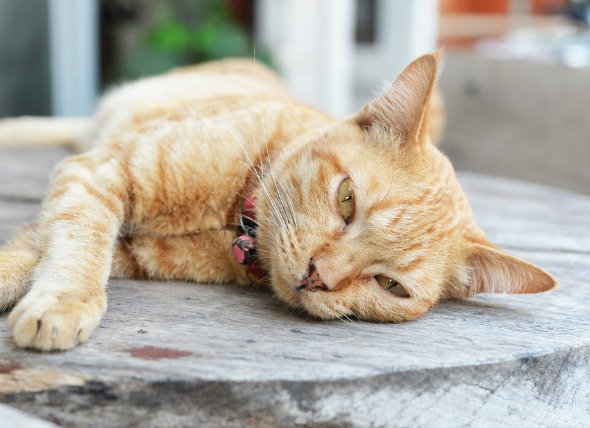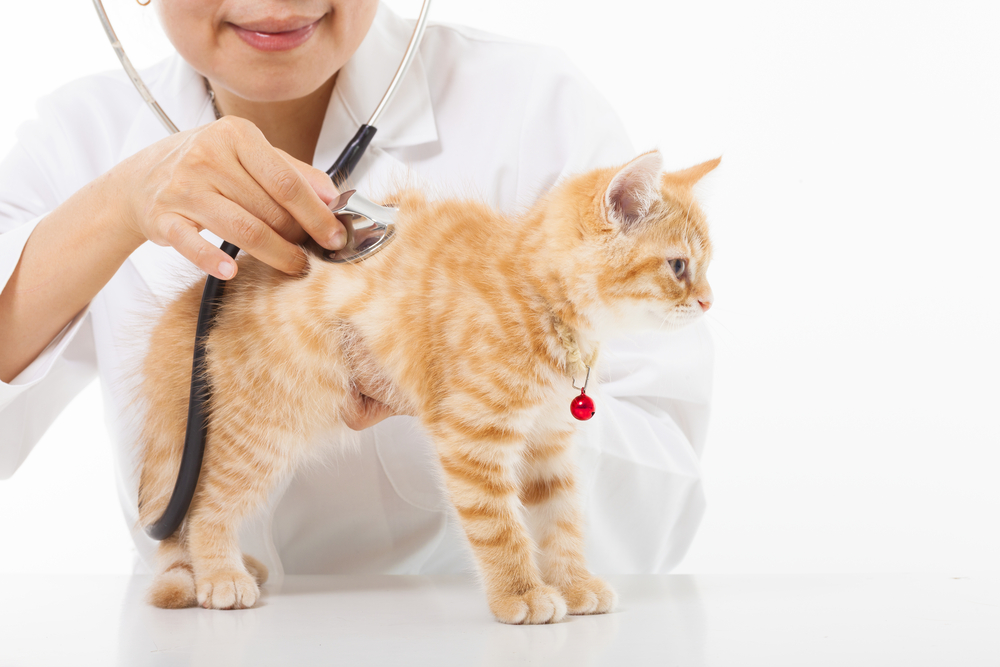

Red eye is a condition that causes the cat's eye to turn, well, red. This inflammation may be due to various factors, including excess blood in the eyelids (hyperemia) or in the eye's blood vessels (ocular vasculature). This occurs when ocular blood vessels expand in response to extraocular or intraocular (outside of, and within the eye, respectively) inflammation, or a passive accumulation of blood.
The condition described in this medical article can affect both dogs and cats. If you would like to learn more about how red eye affects dogs, please visit this page in the PetMD health library.
The most common signs of red eye in cats is redness and inflammation affecting one or both eyes.
There are various factors which may contribute to a cat's red eye, such as inflammation of the eyelid, cornea, sclera, conjunctiva, ciliary body, and iris. Other causes may include:
Your veterinarian will perform a complete physical exam on your cat, including a blood chemical profile, a complete blood count, a urinalysis and an electrolyte panel. You will need to give a thorough history of your cat's health, an onset of its symptoms, and possible incidents that might have precipitated this condition.
Red eye is often a visible symptom of an underlying systemic disease, sometimes of a serious nature. Consequently, bloodwork is essential for ruling out or confirming an underlying disorder.
In order to rule out cancer and infectious causes to the red eye, X-ray imaging can be used for visual inspection of the chest and abdomen. Just as useful for diagnostic purposes are ultrasound images of the eye, which can be performed if the eye is opaque, and tonometry -- measurement of the pressure inside the eyes using a tonometer.
If there is pus-like discharge from the eye, or long-term disease of the eye, your veterinarian will perform an aerobic bacterial culture and sensitivity profile.
Other tests your veterinarian may choose to perform are a Schirmer tear test, used to verify normal tear production; a cytologic (microscopic) examination of cells from the eyelid, conjunctiva, and cornea; and a conjunctival biopsy (tissue sample) if there is chronic conjunctivitis or mass lesions.
For cats, a polymerase chain reaction (PCR) test can be used for diagnosing a hereditary or infectious disease, or an indirect fluorescent antibody (IFA) test of scrapings from the cornea or conjunctivae can be used to test for herpes virus and Chlamydia bacteria, both of which can indirectly affect the eye.
Fluorescein staining of the cornea, which uses a non-invasive dye to coat the eye, making abnormalities more visible under light, can also be used for the detection of foreign material, ulceration, scratches, and other lesions on the surface of the cat's eye.
Treatment will depend on the underlying cause of the ocular disorder, but generally, treatment will be on an outpatient basis. In most cases, cats will have an Elizabethan collar placed on them to prevent self-trauma to the eye.
If deep corneal ulcers are found, or glaucoma is diagnosed, surgery may be necessary to repair the eye.
Keep your cat in a clean, safe environment where it cannot injure its eye. Otherwise, schedule follow-up appointments with your veterinarian to evaluate your pet’s progress.
 Fatty Liver Disease in Cats
Hepatic Lipidosis in Cats
Hepatic lipidosis, know
Fatty Liver Disease in Cats
Hepatic Lipidosis in Cats
Hepatic lipidosis, know
 Excessive Vocalization in Cats
Disruptive Crying and Meowing in Cats
Excessive v
Excessive Vocalization in Cats
Disruptive Crying and Meowing in Cats
Excessive v
 Miscarriage in Cats
Spontaneous Abortion, Pregnancy Loss in Cats
It i
Miscarriage in Cats
Spontaneous Abortion, Pregnancy Loss in Cats
It i
 Eye Injuries in Cats
Corneal and Scleral Lacerations in Cats
In
Eye Injuries in Cats
Corneal and Scleral Lacerations in Cats
In
 Whipworms in Cats
Trichuriasis in Cats
Cats transmit whipworms (Tri
Whipworms in Cats
Trichuriasis in Cats
Cats transmit whipworms (Tri
Copyright © 2005-2016 Pet Information All Rights Reserved
Contact us: www162date@outlook.com